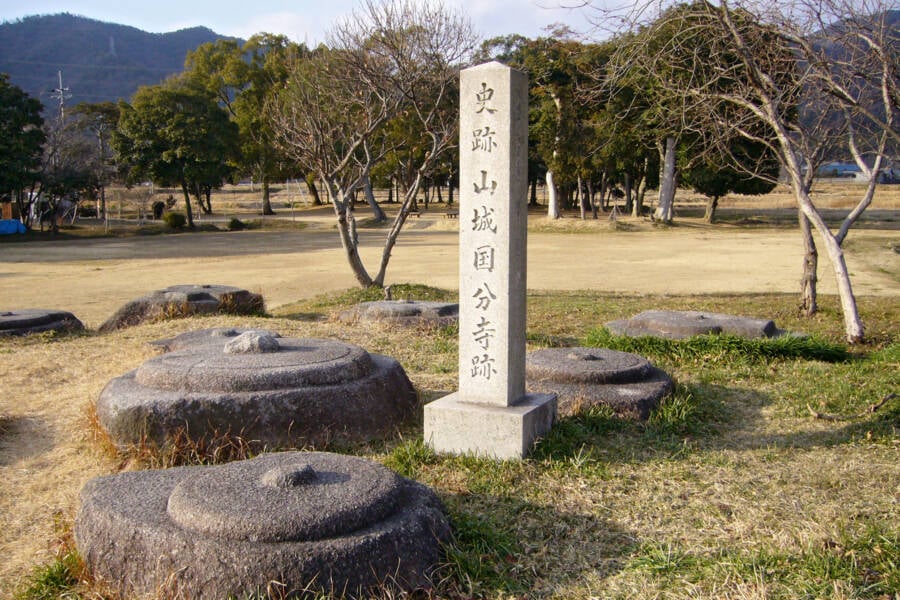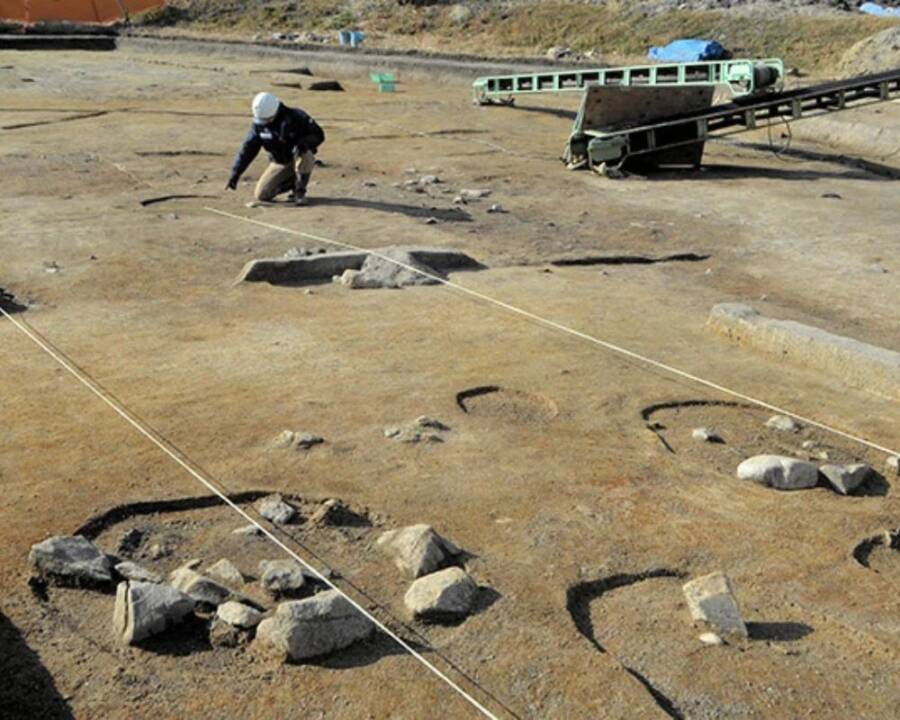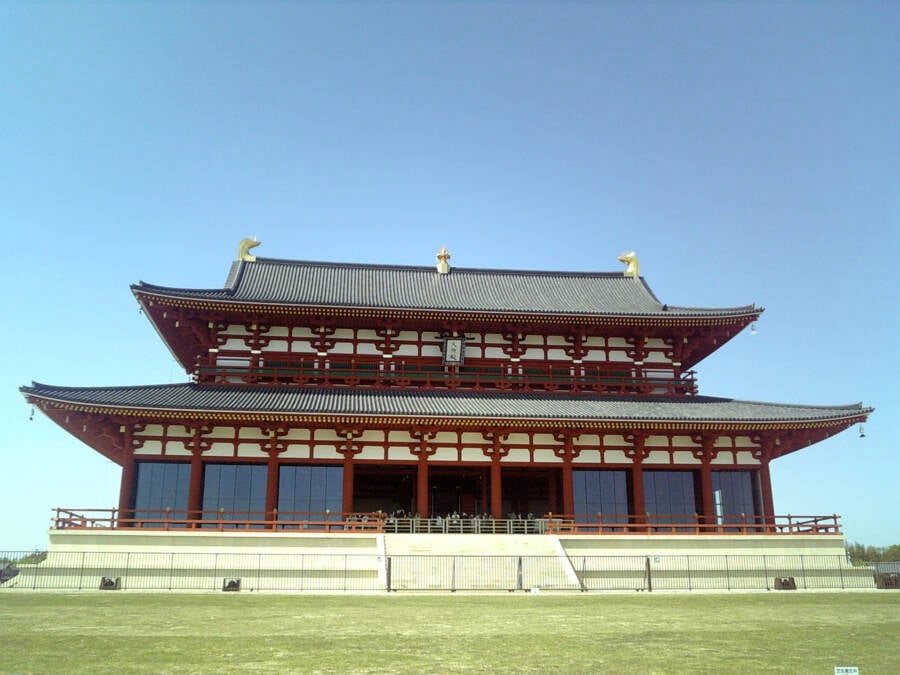If the structure was indeed a dining hall, it may be the largest of its kind ever found in a Buddhist temple from Japan's Nara Period.

663highland/Wikimedia CommonsThe site in Kizugawa, Kyoto, where the Yamashiro Kokubunji Buddhist temple once stood.
Archaeologists in Kyoto recently uncovered the ruins of a cafeteria where monks once dined at Yamashiro Kokubunji temple. The complex was originally built around 740 C.E. as an imperial palace, and it featured multiple buildings that now lie in ruin.
The dining hall may be the largest of its kind from Japan’s Nara Period, and its discovery is offering new insights into the layouts of eighth-century Buddhist temples.
Archaeologists Discover Mysterious Ruins At A Buddhist Temple
On Feb. 4, 2025, the Kyoto Prefectural Board of Education announced the discovery of a cafeteria among the ruins of Yamashiro Kokubunji temple in Kizugawa, Kyoto Prefecture.
The temple, which dates back to the Nara Period (710 to 794 C.E.), was constructed by Emperor Shomu as an imperial palace that featured structures like a pagoda and a large hall. The emperor had it built when he moved the Japanese capital from Heijō-kyō, but it wasn’t completed before he changed the location of the capital once again. When the ruler left the city, the palace was transformed into a Buddhist temple.
Today, only ruins remain. However, researchers have regularly excavated the site to study artifacts from its time as both an imperial palace and a temple.
During a recent dig, they uncovered a previously unknown structure — and they believe it’s a cafeteria that once served as a food preparation and dining area for the temple’s monks.
Uncovering Yamashiro Kokubunji Temple’s Cafeteria
While examining the temple’s northeastern grounds, researchers noticed large foundation stones, each measuring about 27 inches long, placed alongside depressions in the ground. Further excavations revealed that the stones had served as the building blocks for a large structure that stretched 30 feet by 125 feet. The remains of eight pillars were also found at the site.

Kenji ShimizuExcavations revealed several foundation stones and the remains of eight pillars where the cafeteria once stood.
Previous excavations had unearthed another hall nearby, and researchers compared this layout to the designs of other temples from the Nara Period to determine that the newly discovered structure had likely been a cafeteria. One of the buildings may have been used for food preparation or as a warehouse, while the other served as a dining hall where the monks ate their meals.
If this is indeed the case, the cafeteria may be the largest of its kind ever found at a Buddhist temple from the time period. So, why was it so large?

Tamago Moffle/FlickrThe largest hall at Nara Palace, which the cafeteria at the Buddhist temple may have been based on.
According to the Sankei Shimbun, Mahito Uehara, a professor of archaeology at Kyoto University, noted that the temple was built to look like Daigokuden Hall, the largest hall at the former imperial palace. This “is probably why it became so large,” he said. “The fact that it is close to Heijō-kyō may have also played a role.”
“This will be useful for future Kokubunji investigations,” Uehara continued. As excavations continue, researchers hope the discoveries made at Yamashiro Kokubunji may reveal more about Buddhist temples from the Nara Period and Japan’s history as a whole.
After reading about the 1,300-year-old cafeteria found in a Buddhist temple, go inside the history of sumo wrestling, Japan’s national sport. Then, read about Miyamoto Musashi, the Japanese samurai who won over 60 duels.





